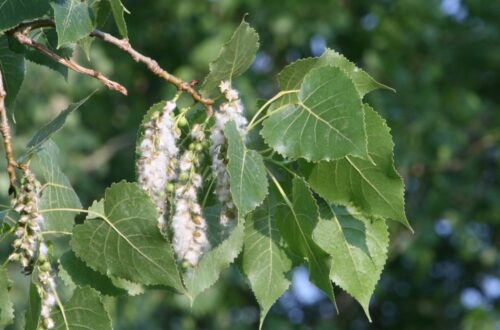
It is a ritual long observed in the West that as the sun dies, living symbols of hope for the light’s return are brought inside the home. Like talismans that ensure the cold will not last, evergreen branches are bound in places of prominence upon our front doors, across our mantles, and draped on staircases. Any evergreen will serve this purpose in winter, but chief amongst them (beloved for its color and scent) is the spruce.
Sitka spruce, in particular, is a rather handsome representation of the species, and hardy besides. They are the tallest and longest-lived of all spruce, and can withstand harsh winds and salt spray from oceans. For this reason they are often planted in places like Ireland or Scotland (both countries having lost much of their native trees), but also thrive throughout North America. They can live for well over 800 years, but they have their origins in a tiny seed which can easily be overcome by foraging animals or simple fungi in its first years of life. Much like a human sperm, the chances of reaching adulthood for a Sitka seed are incredibly minuscule, such that even over 800 years of producing seeds, perhaps only a handful of saplings will survive from a parent plant.
Mutations are not common within spruce, but the most famous example was found in the Yakoun Valley of the Queen Charlotte Islands. Known by the Haida people as Kiidk’yaas, meaning “Ancient Tree,” the spruce was a beautiful golden color. Said to have once been a person, for hundreds of years it was sacred to the tribe, until an ecoterrorist hacked into it, killing it in 1977. While some samples of the tree were taken before its murder, these are carefully guarded, and none are in the possession of the Haida. Truly, a great natural wonder has been lost, and it serves as an indication that mankind has a long way to go before it can call itself truly deserving of the glories of the natural world.
Spruce are crucial shelters for wild animals and excellent for windbreaks to keep exposed homes from the worst of winds. While they are not especially nutritious, they do have copious amounts of vitamin C in them. Many folks, such as YouTuber Townsends, have recipes in which they document how beer made from spruce tips was vital in keeping native tribes and early Americans from developing scurvy. It is important to proceed with care when making anything from spruce, as some varieties are distinctly “skunky”, and a few poisonous trees look similar enough to spruce to be of concern.
To encourage blessings into your home and sweep out negativity, make a small broom out of spruce or tie some lengths of it with green yarn to a broom. Sweep your entire house, including the walls from top to bottom. Be sure to finish your sweeping by brushing some out the door, and then burn the spruce and scatter the (cooled) ashes outside.
You can also take some spruce oil and mix it with salt, then apply it to the boundaries of your home. Spruce cones may be collected in glass jars and buried at the four corners to keep up the health and strength of the household. Spruce sprigs can also be lit and used to smoke cleanse the home, much as you would do with palo santo or sage. Spruce sap may be gathered and burned as any other precious resin, although it is not advisable to do so inside the home.


